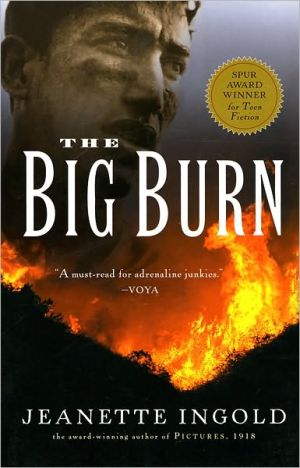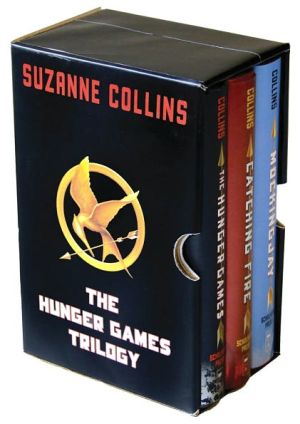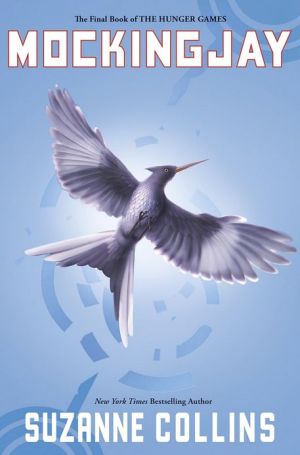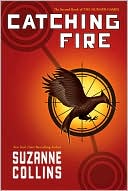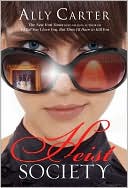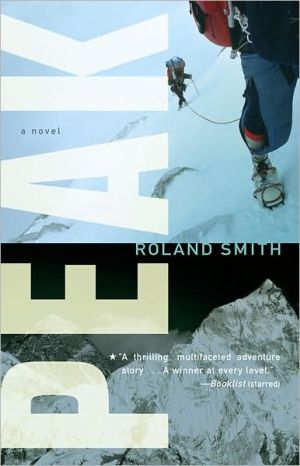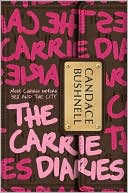The Big Burn
Based on the events surrounding one of the biggest fires of the twentieth centry, The Big Burn is a portrait of a time and a place and an event that altered the face of Montana and Idaho, changed the way we fight wildfires, and dramatically transformed the people on the front lines forever.\ \ \ Three teenagers battle the flames of the Big Burn of 1910, one of the century's biggest wildfires.\
Search in google:
Three teens battle the flames of century's biggest wildfire—and of their own passions—during the Big Burn of 1910.Publishers Weekly"Against the backdrop of beauty and devastation, each of three teens battles the momentum of a wildfire, `the big burn,' that scorched millions of acres across Idaho and Montana in 1910," wrote PW. Copyright 2003 Reed Business Information.
FIELD NOTES A fair day followed a night brightened by dry lightning streaking to earth. Ranger William Morris set out from Coeur d'Alene Forest headquarters in Wallace, Idaho, to accompany a university professor on an expedition to look at mountain vegetation. They headed south along Placer Creek and then angled off to climb Striped Peak. A stiff wind kept them comfortable as the day heated up.\ The Coeur d'Alene National Forest stretched out around them, a million and a half acres of pine and Douglas fir, of tamarack and hemlock and cedar. Needled treetops locked together to line canyon bottoms and cover furrowed slopes in unbroken sheets of green. In the distance, where jagged, bare peaks rose from layered tiers of rough mountains, the green turned to hazy blue.\ They were eating lunch atop the sixty-three-hundred-foot summit when Morris noticed smoke in the southwest. He took a compass bearing and went back to his meal. But then a second, quickly ballooning smoke appeared in the southeast and was soon followed by the wispy track of a third fire.\ He plotted their locations on his map, and then he and the professor returned to Wallace to report them.\ The next time Morris climbed Striped Peak, he would find that all the land's greenness was gone, replaced by a blackened tangle of burned trees. He would write that they reminded him of jackstraws more than anything else.\ Washington State July 13, Morning Private Seth Brown, seventeen, of the all-black Twenty-fifth Infantry (except for the white officers) slid the bayonet blade onto his rifle and jammed its keyhole fitting into place. Everyone else in the squad was long done cleaning up from the morning's training and preparing for the afternoon's, but Seth-his fingers fumbling through still unfamiliar tasks-was keeping them all from going to lunch.\ "Hey, Junior!" one of the men said. "You break that U.S.A. government property, and you'll be buying it out of your pay."\ "Shut up," another said. "You want to slow him down more?"\ Seth bent over his last task, which was to fit the required gear onto his belt for the afternoon march. He hurried as best he could, but trying to remember how to attach it all....And his canteen! How could he have forgotten to fill it? Even if he didn't need the water, Sarge would notice the canteen swinging empty and get on him about that.\ A hand held out a filled one, and Seth looked up to see the new guy on the squad. Abel, that was his name.\ "I got here with an extra," Abel said, shrugging to make light of his help.\ "Thanks," Seth told him. "I owe you."\ "I'll collect," the other said with a smile.\ Seth had seen how fast Abel had got all his own gear squared away, arriving less than an hour earlier and already fitting in. He was the kind of soldier Seth wanted to be, only the harder Seth tried, the more he seemed to mess up. Seth had thought that maybe when his company left its garrison outside of Spokane, he'd get a chance to show how he could at least stick to a hard job longer than anybody, but it hadn't happened. So far, bivouac was proving as much a disaster as anything else in the months Seth had been in the army.\ Sometimes he wondered why he'd signed up-even lied about his age so he could-and then he remembered how he'd believed he could do his father proud. Join his father's old outfit and pick up where his father had left off, fighting wars and stopping riots. Those had been his father's favorite stories, told over and over those last days before sickness made his leg gangrene and then killed him.\ Anger surged through Seth. It wasn't right for his father not to have told him the whole of it, how the army also meant learning a hundred new jobs and a hundred right ways to do them.\ The army had a right and a wrong even for campfires, it seemed. Just that morning Seth had got up before reveille to make one, thinking the other men might welcome a way to ward off the early morning chill. Only, Sarge had yanked him to his feet and loudly demanded to know what Seth thought he was doing. "You want to want to burn this whole place down?"\ Like I didn't have sense to handle a simple fire! Seth thought. He smarted all over again, remembering the disgusted voices of his awakened tent mates. "Brown, of course. No one else dumb enough to find trouble even before wake-up."\ Now, finally, Seth attached the last item to his belt, tightened the gaiters that wrapped around his trouser legs from foot to knee, and made sure he'd buttoned the four pockets of his uniform jacket. Cut for a man, it was too full for Seth's slender body, but he couldn't do anything about that. He reached for his wide-brimmed felt hat.\ "Hey, looks like you got it," the new guy, Abel, said. "Come on. Let's get some chow, and then you can tell me what's what around here."\ Copyright © 2002 by Jeanette Ingold\ All rights reserved. No part of this publication may be reproduced or transmitted in any form or by any means, electronic or mechanical, including photocopy, recording, or any information storage and retrieval system, without permission in writing from the publisher.\ Requests for permission to make copies of any part of the work should be mailed to the following address: Permissions Department,\ Harcourt, Inc., 6277 Sea Harbor Drive, Orlando, Florida 32887-6777.\ www.HarcourtBooks.com
\ From the Publisher"A must-read for adrenaline junkies."—VOYA\ "Ingold captures the momentum of a wildfire."—Publishers Weekly\ \ \ \ \ \ Publishers Weekly"Against the backdrop of beauty and devastation, each of three teens battles the momentum of a wildfire, `the big burn,' that scorched millions of acres across Idaho and Montana in 1910," wrote PW. Copyright 2003 Reed Business Information.\ \ \ From The CriticsIn this fascinating, gripping adventure/survival story based on a 1910 fire in Idaho and Montana, author Jeanette Ingold skillfully intertwines the lives of three teenagers caught up in the fire. There is Seth, an insecure 17-year-old African-American soldier whose unit is called in to help fight the fire, escapes the pernicious influence of a "friend," and discovers that he, like his father, has a future in the army. And there is 16-year-old Jarrett, who loses his railroad job, leaves the home of his domineering father, and proves himself by successfully leading ill-trained fire crews, and who learns that a career in forestry is for him. Finally, there is 16-year-old Lizabeth and her widowed aunt, who are forced by the fire to abandon their homestead, but find equal danger in town. The romantic relationship between Jarrett and Lizabeth, as well as that between Jarrett's older brother and Lizabeth's aunt provide nice romantic touches. Nonfiction "field notes" interspersed throughout the story provide necessary background by chronicling the actual events of the fire. Additionally, the short chapters, which shift from one character to another, make for a lively, suspenseful read. 2002, Harcourt, 295 pp., \ — Bill Mollineaux\ \ \ \ \ KLIATTTo quote from the review of the hardcover in KLIATT, July 2002: Ingold's novel based on the events of the Big Burn, a massive forest fire in the Northwest in the summer of 1910, is complex, with frequent cutaways that enable the reader to follow the stories of three teenagers caught up in this calamity. The first is Seth, a young black soldier whose unit is called in to help fight the fire. The second is Lizbeth, living on a homestead with her aunt, isolated. The third is Jarrett, whose father works for the railroad and whose brother is a forest ranger. The lives of each of these adolescents and those around them change dramatically as the fires spread. Jarrett takes on the job of a firefighter, learning some essentials from his brother, but essentially way over his head with danger and responsibility. Lizbeth's aunt is determined to hold on to the forestland on her claim, risking their lives out of greed and desperation. Seth is proud to be a soldier, but is befriended by another young man who is a bad influence on him. When a chance to escape their responsibilities comes, Seth is forced to make some difficult choices. The three teenagers' lives eventually become enmeshed in the dramatic fight to save the forest, the towns, and themselves. Ingold lives in Montana and is able to convey the beauty of the area where the fire struck. She describes the struggle against the overwhelming fire with great care; and it is a story of danger and drama. The complicated switching from one character to another in the third person is more demanding than many YA novels that follow a plot through one character, frequently in the first person. Since this is a format many adult suspense stories incorporate,YA readers may be familiar with it and not find it too challenging. KLIATT Codes: JS; Recommended for junior and senior high school students. 2002, Harcourt, 301p. bibliog. map., \ — Claire Rosser\ \ \ \ \ VOYAThis excellent survival story is based on the great 1910 forest fires in Idaho and Montana, when August 10 became known as "the day the mountains roared." Readers follow three characters, Lizbeth, Jarrett, and Seth, as they determine their roles in the crisis, decide whether to escape or stay to fight the fire, and face many changes when the fire is over. Lizbeth and her widowed Aunt Celia are barely hanging on to their homestead, but Lizbeth loves the forest and wants to make her home there. They meet teenaged Jarrett, looking for a job as a firefighter, and Samuel, his forest ranger brother. Sparks instantly fly between the two pairs, but both Jarrett and Samuel must head into the danger of the fire while the women must decide whether to escape or fight. Seth is an African American soldier under the influence of an older man in the regiment, who encourages Seth to use the fire as an opportunity to escape in civilian dress. Seth and Jarrett meet in a street fight, and when Jarrett sees Seth attempting to escape, he influences Seth to put aside his fear and face his duty as a soldier. The chapters shift between the three characters, but the plot is followed easily. Field notes interspersed in the text tell about the fire danger in the forest, the start of the blaze, and how people escaped or sought shelter. The bibliography provides further reading for readers who want to learn more. Lizbeth, Jarrett, and Seth are likeable young heroes, and the action builds to a fevered pitch, resulting in a must-read for adrenaline junkies. Biblio. VOYA CODES: 4Q 4P M J (Better than most, marred only by occasional lapses; Broad general YA appeal; Middle School, defined as grades 6 to 8; Junior High,defined as grades 7 to 9). 2002, Harcourt, 304p, \ — Hillary Theyer\ \ \ \ \ Children's LiteratureIn the summer of 1910 one of the largest wildfires in the states of Montana and Idaho changed the methods of firefighting used today. Hundreds of blazes were ignited by lightening, campfires, and from sparks thrown off by trains. These smaller fires combined and formed an incredible force. Walls of flames threatened and destroyed forests, homesteads, animal habitats, and towns. Caught in the melee were three young adults. Lizbeth and her aunt were hoping to sell the valuable timber. Seth, a black soldier, was hoping to prove himself and live up to the standards of his father. Jarrett escaped his overbearing father and ended up in a race for his life when caught in a raging wildfire. Their lives were entwined during an amazing six weeks of incredible danger. The story is captivating and will soon have the reader enthralled in events that happen all too often as fires threaten during drought conditions. Woven throughout the story are field notes that chronicle the actual events of the era. Young adult readers are sure to be enthralled by the frightening dangers faced by the three young heroes. 2002, Harcourt, \ — Laura Hummel\ \ \ \ \ School Library JournalGr 7 Up-This exciting survival/adventure story is told ensemble-style. Bumbling Private Seth Brown of the all-black 25th infantry wonders if the Army will be as good to him as it was to his father. Lizbeth, 16, wants to stay on the homestead claimed by her 26-year-old aunt Celia, but Celia can't wait to return East. Jarrett Logan, 16, tossed out on his own by his gruff and demanding father, finds that being reunited with his older brother, a forest ranger, isn't much smoother. These threads become plausibly entwined as each short chapter gradually builds toward the climactic "perfect storm" of forest fires that raged in Idaho and surrounding states during the summer of 1910 and is known as the Big Burn. The author's frequent foreshadowing seems heavy-handed. Periodic "Field Notes" give authorial voice to background material that, while relevant, is clearly shown in the plot. Stereotyping the bad guy as having a scar and a crossed eye seems unnecessary. Excellent period vocabulary may send some readers to the dictionary. The round-robin plot construction keeps the pace moving effectively through the climactic scenes and the mostly predictable, satisfying resolutions that follow. An afterword notes that evidence of this fire remains visible today. The "Sources and Suggestions for Further Reading" section is excellent, subdivided by subject and including books, newspapers, and Internet resources.-Joel Shoemaker, Southeast Junior High School, Iowa City, IA Copyright 2002 Cahners Business Information.\ \ \ \ \ Kirkus ReviewsBorn of sparks from trains, the working fires of homesteaders and miners, the campfires of hoboes, and lightning coursing down from the summer sky, the fires joined as a wall of flame, an "orange hell" that consumed two-and-a-half-million acres of public forest land by the time it was done. It was called the Big Burn, and "August 20, 1910, would be remembered as the day the mountains roared." Ingold (Airfield, 1999, etc.) develops the stories of three teens involved in and affected by the drama of the raging fires. Their narratives are leisurely developed, and it is almost two-thirds of the way into the long novel before the pace of their stories escalates to parallel the rise of the fire itself. Jarrett, the brother of the forest ranger, Lizbeth, the homesteader determined to keep her land, and Seth, the enlisted man in the all-black Twenty-fifth Infantry hoping to find and prove his courage, are the three characters whose lives intertwine in the face of a natural disaster. When the fires finally join and the story picks up its pace, an exciting tale ensues. The air turns orange, the gale-force winds rage, trees tumble through the air like sticks, and the roar of the fire bounces off of the canyon walls as the fire sweeps through Idaho and into Montana. Readers with a taste for sprawling tales will find their efforts rewarded. An afterword by the author and suggestions for further reading will inform readers more about this spectacular but little-known event in American history. (Fiction. 12-15)\ \
